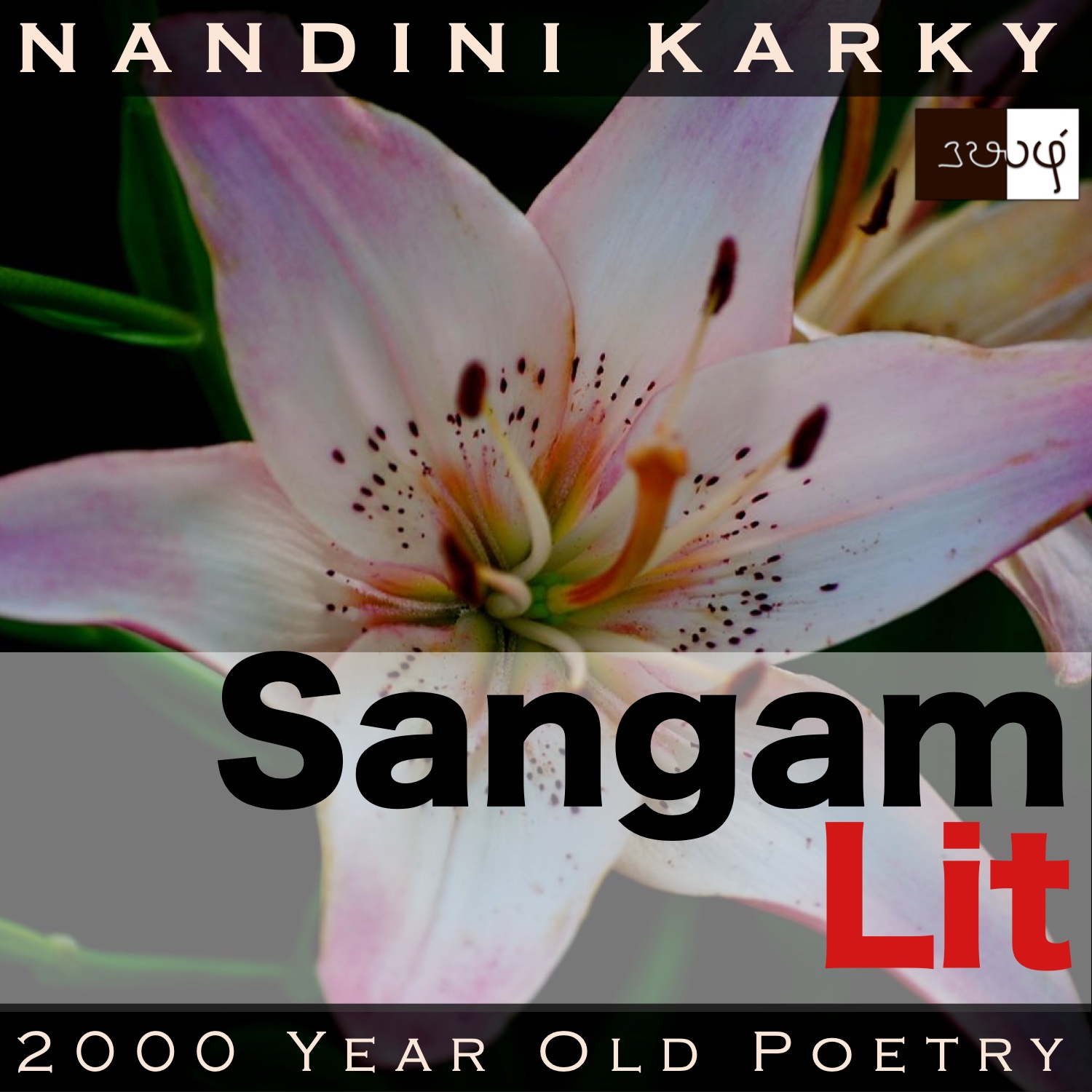Podcast: Play in new window | Download
Subscribe: Apple Podcasts | Spotify | Amazon Music | Android | iHeartRadio | TuneIn | RSS | More

In this episode, we observe the effect of seeing a lady’s eyes on a young man, as portrayed in Sangam Literary work, Kurunthogai 72, penned by Mallanaar. The verse is situated in the hills of ‘Kurinji’ and speaks in the voice of the man to his friend, responding to his query about the reason for the changes in the man.
பூ ஒத்து அலமரும் தகைய; ஏ ஒத்து
எல்லாரும் அறிய நோய் செய்தனவே-
தே மொழித் திரண்ட மென் தோள், மா மலைப்
பரீஇ வித்திய ஏனல்
குரீஇ ஓப்புவாள், பெரு மழைக் கண்ணே!
A sense of something soft and yet powerful emanates from this one! As it opens, we glimpse at ‘பூ ஒத்து’ meaning ‘flower-like’ and in a short distance, ‘ஏ ஒத்து’ meaning ‘arrow-like’ appears and establishes the contrast of something soft and something sharp mentioned earlier. The phrase ‘எல்லாரும் அறிய நோய்’ meaning ‘an affliction that becomes known to everyone’ intrigues us! What could be that disease that instantly becomes visible to all around? Sangam women all seem to speak ‘sweet words’ as can be sensed in ‘தே மொழி’. From her words, the focus turns on a physical attribute, her ‘fleshy and soft arms’ in ‘திரண்ட மென் தோள்’. A concept of some significance in the field of agriculture can be seen in ‘பரீஇ வித்திய ஏனல்’ meaning ‘cotton and millets sown together’. Ending with the words ‘மழைக் கண்ணே’, the verse ends with one of my favourite expressions for a woman’s eyes, something seen in many sangam poems, talking about ‘rain-like eyes’!
What power could those eyes depicted as flowers and rain showers wield? The context reveals that the man had met the lady in the mountains and fallen in love with her and the lady too seemed to reciprocate his feelings. When the man is with his friend, this person notices the changes in the man and queries him about it. To his friend, the man says, “With a nature akin to flowers, they move around with meekness, but with the nature of arrows, they seem to cause an affliction in me for all to see! With words of honey, having thick and gentle arms, she chases away birds on the great mountains, where amidst cotton, millets are sown and grown. My lady with huge, rain-like eyes!” With these words, the man relates how he has fallen for the mountain lady’s fine eyes.
Time to listen closely to the man’s words! His surprise in the power of the lady’s gentle eyes can be sensed in the way he describes how it looks like flowers and moves around, perhaps like a startled deer’s eyes, and yet, like a well-aimed arrow, they seem to hit his heart at the right spot and create havoc. This havoc appears in the form of an affliction, something that’s plainly visible to all around him. The man seems to be saying to his friend that not only you, my friend, anyone around can sense the changes in me. He then goes on to describe the wielder of those arrows, calling her words, that of honey. Explaining it’s not just the lady’s eyes and words he knows about, he talks about her soft and thick arms too. Then, he turns to mention her occupation, which seems to have been chasing away birds in that mountain field, where both cotton and millets are growing together. Saying all this, the man finishes, perhaps with a sigh, recollecting the beauty of her eyes, like the picturesque rain!
Leaving aside all the other lines in the character-sketch of the lady, let’s zoom on to the one where she’s chasing away birds. This occupation of mountain girls to chase away parrots and other birds from their father’s millet fields have been explored in many ‘Kurinji’ poems. But, in this one, we get an additional information about how cotton too seems to be growing in the same field, side by side. This led me to search on whether cotton-millet cultivation is something practised even now. In one news article from the late 2010s, a millet farmer complains because all his neighbours are growing cotton and the birds seemed to attack only his millet fields. While that is one side of the story, other recent news articles talk about farmers now choosing to cultivate millet instead of cotton, as these are hardy crops and soil-fertilising as well. In both cases, millets and cotton seemed to be a replacement for one another. But, like our ancestors, couldn’t both these crops be grown together? Like the lady’s gentle eyes, this soft song on relationships thus seems to hold within the arrow of knowledge about possibilities in agriculture!




Share your thoughts...